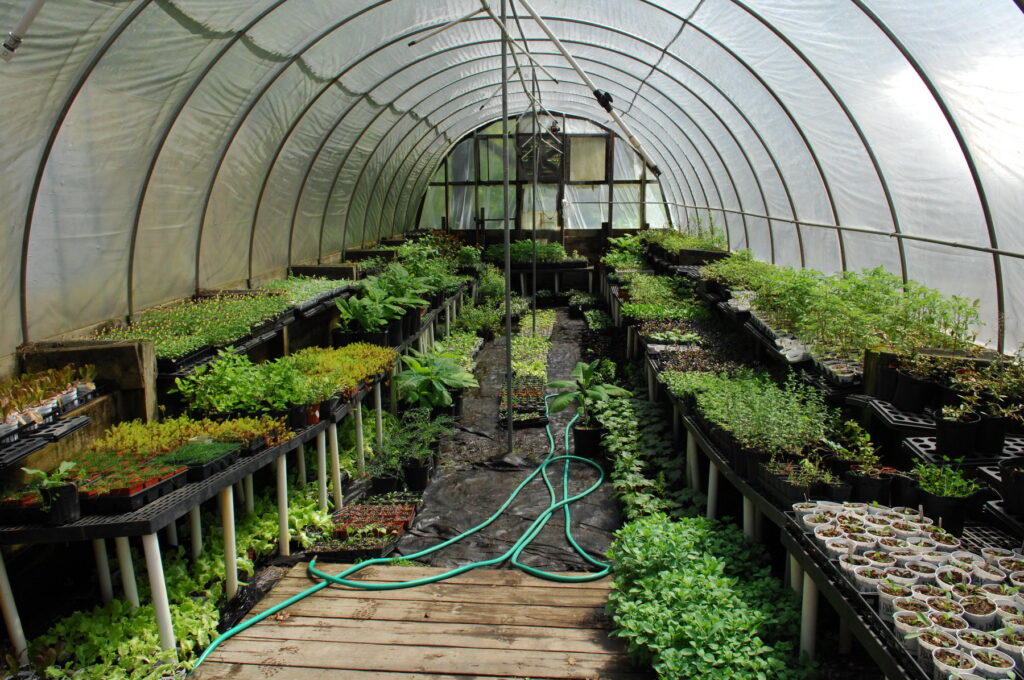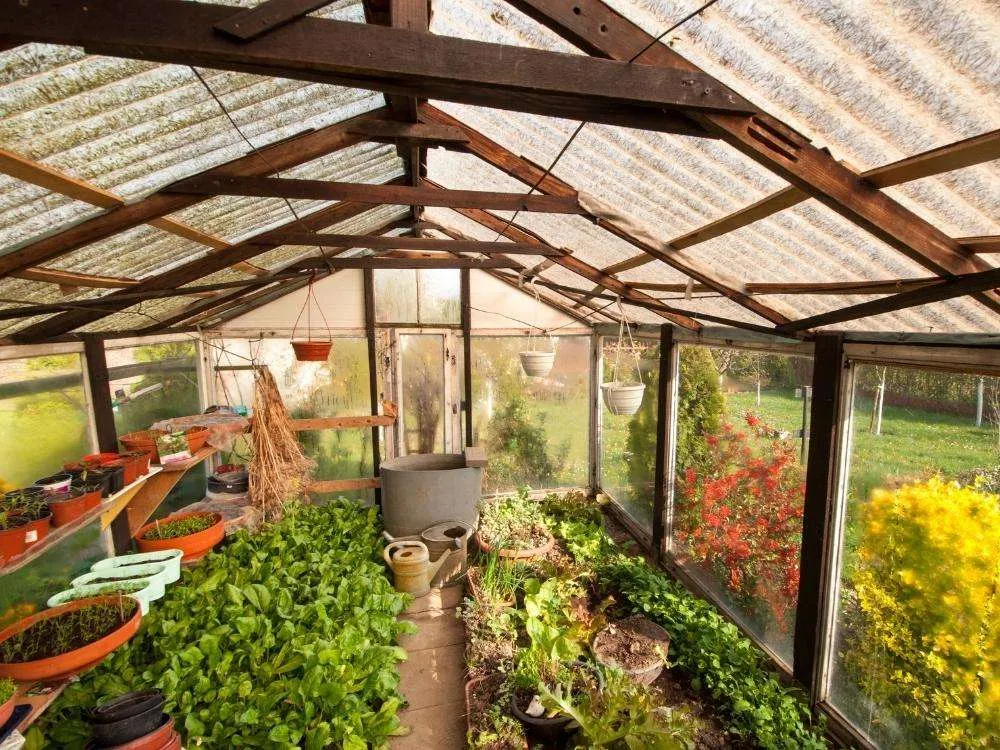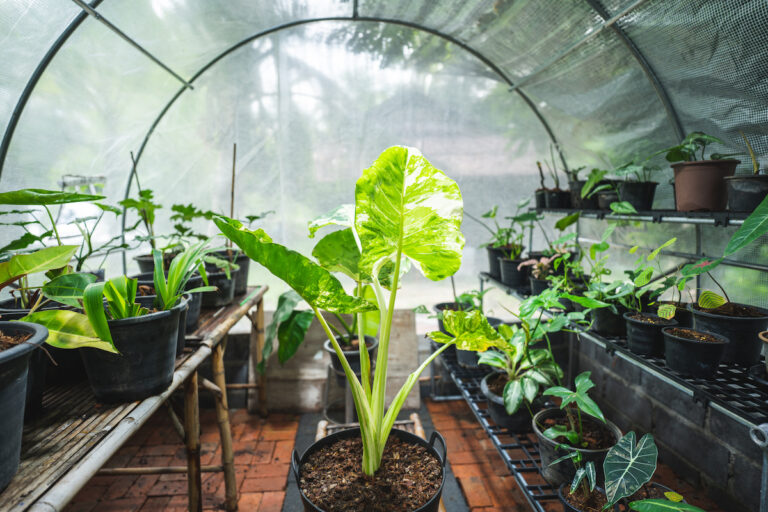As I stepped into my greenhouse on a crisp, snowy morning, a burst of warmth and vibrant greenery enveloped me. Outside, the world lay dormant under a blanket of white, but inside, life flourished. It was a testament to the magic of greenhouse gardening during winter – a hidden world of endless possibilities.
If you’ve ever wondered, “Can you grow vegetables in a greenhouse during winter?” – the answer is a resounding yes, But there are some considerations for harvesting vegetables like temperature, lighting, insulation, soil, planting time, and so on.
In this guide, you’ll unveil the secrets to not only surviving but thriving during the coldest months, all while reaping the rewards of fresh, homegrown produce. Join me on this journey as you unlock the potential of your winter greenhouse wonderland.
What are the factors to consider during the winter for vegetable growth?

Temperature Control: Maintaining the right temperature is crucial for winter greenhouse gardening. You can heat the greenhouse to provide the ideal temperature for your chosen vegetables.
Further, different crops have varying temperature requirements, so monitoring and adjusting the greenhouse’s heating system is essential. Cold-tolerant vegetables like lettuce, spinach, and kale can thrive in cooler conditions, while warm-season crops like tomatoes and peppers may need additional warmth.
Light: During the winter, natural daylight hours are limited, so supplementing with artificial grow lights is essential to ensure your plants receive adequate light for photosynthesis and growth. Energy-efficient LED grow lights are suitable for greenhouse use and help compensate for the reduced sunlight.
Insulation: Preventing heat loss during cold nights is essential for plant health. Consider using insulation methods such as double-glazed windows or adding insulating materials to the greenhouse structure. Proper insulation helps maintain a stable temperature.
Ventilation: To regulate humidity levels and prevent condensation, effective ventilation is necessary. Adequate ventilation also helps manage temperature fluctuations and ensures a continuous supply of fresh air within the greenhouse. Proper airflow is essential for preventing fungal diseases.
Humidity Control: Combat the dry winter air by increasing humidity levels inside the greenhouse. You can achieve this by misting the plants regularly or using humidifiers. Maintaining the right humidity helps prevent stress on the plants and reduces the risk of dehydration.
Soil and Plant Selection: Choose cold-hardy vegetable varieties that are suitable for winter growing. Some examples include winter lettuce, Swiss chard, broccoli, carrots, and radishes. Use high-quality potting mix or well-draining soil that retains moisture without becoming waterlogged.
Planting Timing: Begin planting your winter crops in late summer or early fall to allow them to be established before the coldest winter months. The timing may vary based on your location and the specific vegetables you intend to cultivate.
Pest and Disease Management: Be vigilant for pests and diseases, as the controlled environment of a greenhouse can sometimes create favorable conditions for these issues. Implement integrated pest management (IPM) techniques to identify and address problems early. Maintaining a clean greenhouse environment also reduces the risk of infestations.
Watering: Consistent watering is essential for plant health. Be cautious not to overwater, as excessive moisture can lead to root rot, especially in cold conditions. Monitor the soil’s moisture levels and adjust your watering schedule accordingly.
What Can You Grow in a Winter Greenhouse?
Here’s a list of the vegetables and herbs you can grow in a winter greenhouse:
Hardy Herbs:
- Chervil
- Chicory
- Chives
- Coriander
- Fennel
- Garlic bulbs
- Lavender
- Lemon Balm
- Marjoram
- Mint
- Oregano
- Greek Oregano
- Parsley
- Rocket
- Rosemary
- Sage
- Sorrel
- Thyme
- Winter tarragon
- Yarrow
Winter Greenhouse Salads & Vegetables:
- Hardy winter lettuce (e.g., ‘salad bowl’)
- Rocket
- Pak choi
- Mizuna
- Lamb’s lettuce
- Spinach
- Snow peas
- Radishes
- Garlic
- Cauliflower
- Beetroot
- Silverbeet
- Turnips
- Onions
- Warrigal greens
Other Winter Vegetables:
- Potatoes
- Cabbage
- Broccoli
- Brussels sprouts
- Carrots
- Bean sprouts
- Kohlrabi
- Green peas
- Kale
- Swiss chard
How to clean a greenhouse for winter?

To get started, follow these steps:
Clear the Space: Before you embark on the cleaning process, relocate all your plants from the greenhouse to a sheltered area. This step ensures your plants remain safe while you work on revitalizing their growing space.
Debris Removal: Begin by meticulously sweeping or vacuuming away any debris and dirt from the interior of your greenhouse. This thorough clean-up helps eliminate potential hiding spots for pests and improves overall cleanliness.
Structural Cleaning: To ensure a hygienic environment, clean all the structural components of your greenhouse using a suitable disinfectant. You can choose a garden-specific solution or opt for a household cleaner. Using a hot solution will enhance its effectiveness in killing bacteria and pathogens.
Glass Panels: For crystal-clear transparency and optimal light transmission, clean each glass panel with a high-quality glass cleaner. Pay special attention to stubborn dirt, algae, and mold. Scrubbing and soaking off these contaminants will make a significant difference in the amount of light your plants receive.
Remember, a clean and well-maintained greenhouse not only promotes plant health but also reduces the risk of disease and infestations. It’s an essential step in preparing your greenhouse for the winter season, ensuring that your winter plants have the best possible growing conditions.
FAQ:
1.Can you grow in the winter in a greenhouse?
Yes, you can grow plants in a greenhouse during the winter, as it provides a controlled environment with regulated temperature and protection from harsh weather.
2. How do you heat a greenhouse in the winter?
Greenhouses can be heated using various methods such as electric heaters, gas heaters, geothermal systems, or even passive solar heating techniques.
3. What is the best greenhouse for winter growing?
A well-insulated greenhouse with double-glazed or polyethylene-covered walls and a reliable heating system is ideal for winter growing.
4. Can you grow cucumbers in a greenhouse in winter?
Yes, cucumbers can be grown in a greenhouse during winter with proper heating and lighting, as they thrive in warmer conditions.
5. What temperature is too cold for a greenhouse?
Most plants suffer damage below freezing (32°F/0°C), so maintaining a minimum temperature above freezing is crucial for a greenhouse in cold weather.
6. Should you heat a greenhouse in the winter?
Yes, heating a greenhouse in winter is essential to provide a suitable environment for plant growth, prevent frost damage, and extend the growing season.
Conclusion:
To wrap up, I was curious about growing vegetables in my greenhouse during the winter, and I learned that it’s definitely possible. I found that controlling the temperature is crucial, as different vegetables have different preferences.
Also, adding LED lights helped make up for the shorter winter days. Insulating the greenhouse kept the warmth in, and proper ventilation prevented issues like excess humidity and diseases.
Further, to combat dry air, I used misters and humidifiers. I chose cold-resistant veggies and planted them at the right time. Regular maintenance and keeping an eye out for pests and diseases were essential.
Plus, I made sure not to overwater my plants. With some care and planning, I had a successful winter vegetable garden in my greenhouse.”

